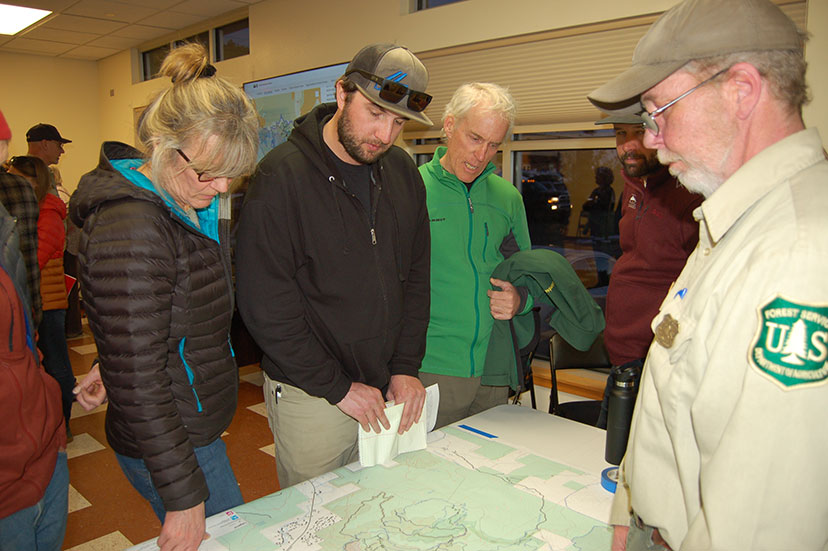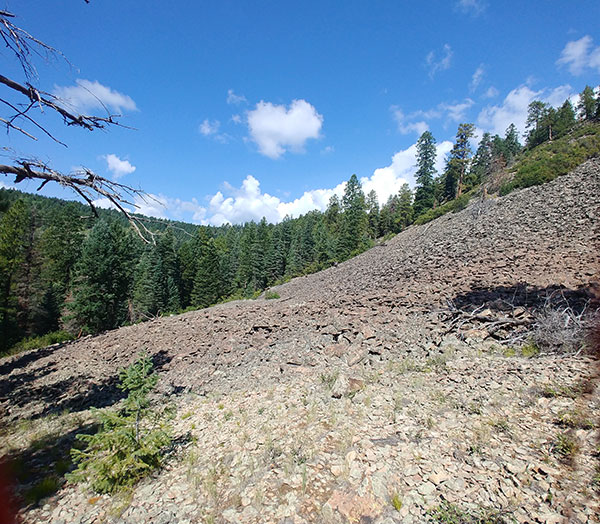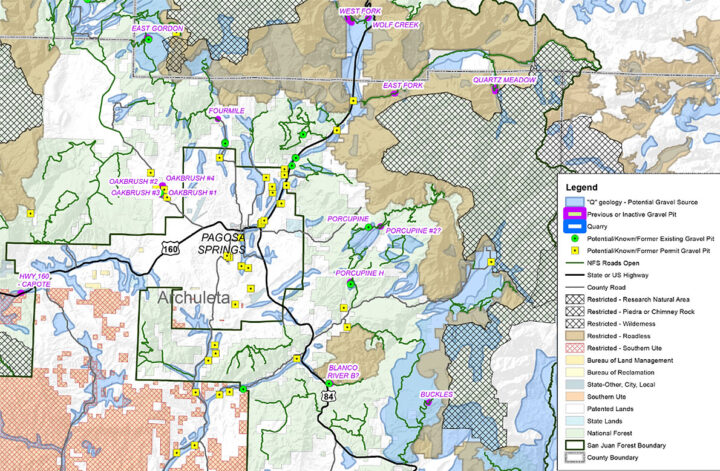Yesterday, in Part Two, we briefly discussed a potential gravel mining and crushing operation as part of the Jackson Mountain Landscape Project. The mine has been requested by Archuleta County, but the final determination about moving forward with the gravel pit — or, not moving forward — will be made by the U.S. Forest Service following the current NEPA (National Environmental Protection Act) process.
The overall Jackson Mountain project area measures about 10,000 acres. The area proposed for the potential gravel mine measures about 13 acres.
You can download the Forest Service description of the gravel pit project here.
The deadline for public comments is February 23. To submit comments on the project, go to this website and click on “Comment/Object on Project”.
Hardcopy input can be mailed via United States Postal Service (USPS) or sent via courier (UPS/FedEx) to:
Pagosa Ranger District – Jackson Mountain project
180 Pagosa Street
PO Box 310
Pagosa Springs, CO 81147
As mentioned, the request to consider this gravel pit came from Archuleta County… although we are not sure exactly who at Archuleta County made the request. Nor are we sure whether the current BOCC still supports that location…
Our three Archuleta County commissioners — Veronica Medina, Ronnie Maez and Warren Brown — met for a work session on Tuesday, February 7, and Commissioner Brown handed around a map, showing the location of various gravel pits, of various types, in Archuleta County.
Below is a section of that map. The purple dots indicate “Previous or Inactive Gravel Pits”. The green dots are “Potential/Known/Former Existing Gravel Pits.” The yellow squares are “Previous/Known/Former Permit Gravel Pits”. (I am not clear on what exactly those different definitions indicate.) You can click on the map for a larger version.
In this section of the map, I count about 45 gravel pit locations, not including the “Previous or Inactive” ones marked in purple.
Commissioner Medina suggested that the BOCC might want to look at alternative pit locations, rather than the one included in the Jackson Mountain NEPA study.
“Some of the [Jackson Mountain] documents I’ve received… show that it was the County that initiated the conversation with the Forest Service, in moving forward with the gravel pit there. So, I’ve heard that we’re not married to this location. And if we’re the ones who initiated it, and it’s not the right thing to do, then don’t we — as the County — have to retract… or let the Forest Service know that we are interested, maybe, in other locations?
“I don’t know, because I saw a document that had a commissioner’s signature on it, that they had to do some kind of study, and it was initiated by the County. So it’s not fair to say that this is solely a decision by the National Forest. We’re the ones also participating in initiating it.
“I agree that we need gravel. Absolutely, 100%. But in all fairness, and in the interests of transparency, we need to get the information correct, and out there, because it doesn’t sound like it’s just the National Forest.”
Commissioner Maez noted that some of the people objecting to the gravel pit are bringing up ‘wildlife impacts’, but said that he feels the wildlife impacts would result mainly from the development of a trails network.
“Wildlife is affected by a lot of trails and bike paths and ATV trails as well. And that’s what will affect the wildlife, more than what a gravel pit would.”
County Attorney Todd Weaver suggested that the logging activities currently taking place on Jackson Mountain also have an effect on wildlife.
Commissioner Maez noted that the Jackson Mountain planning process has been going on for 18 months already.
“Whether the County initiated this or not, we’re going to be another two or three years behind the curve on the need for gravel… What we need to anticipate, as officials, is a huge increase in our budget, for gravel for Road & Bridge for next year. Because this isn’t going to happen for another two or three years, if we choose another location.”
In other words, government moves at a glacial pace, especially at the federal level. (Those are my words, not Commissioner Maez’s.)
Commissioner Warren Brown:
“The County cannot overrule the Forest Service, if they say yes or no. And whether the County initiated this, I believe they came right from the Fawn Gulch project, to this, as a second possible location…”
Over the past couple of years, the County and the Forest Service had been discussing a gravel pit on National Forest land, that would truck gravel through the Fawn Gulch subdivision. That proposal understandably met with opposition from the subdivision residents.
Commissioner Brown:
“And I’m curious to see what the NEPA studies are going to show, and the feasibility of not only the gravel pit but also the bike trails up there, before I’m willing to make any kind of commitment to either support it or not support it. And how it’s going to affect the wildlife, and the increased traffic on the road, and I think we have the Audubon Society up there, as part of the group that’s looking into it.
“So I think this is a ‘big picture’ item. I think it’s incumbent on us, if there are other locations, that maybe we even start looking in advance, so whether this [Jackson Mountain] plan goes through or not, we’re not as far behind, in the event this is a hard ‘No’.”
Commissioner Maez:
“Well, they mentioned the one down there by County Road 500. I lived there. When I grew up there, we had — what? — 14 gravel pits. And those 14 built the gravel roads for Pagosa Lakes. They built all the roads for San Juan River Village. For all the extra subdivisions that we didn’t have back then.
“And yeah, it was dusty. But what do we do? What would have happened if we’d said ‘no’ to a gravel pit back then?…”



